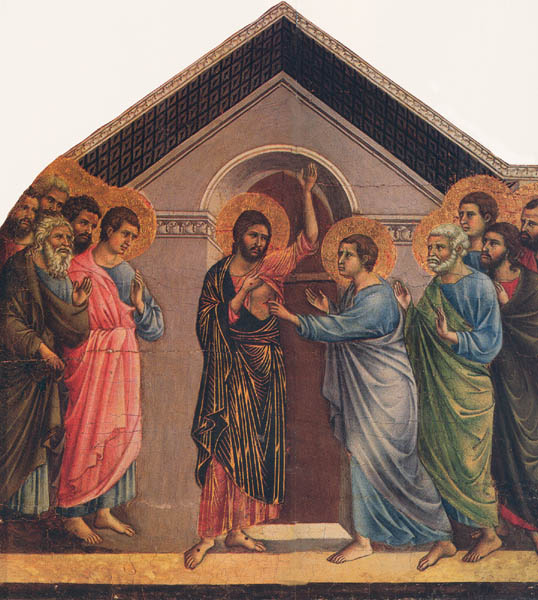Image Details

Scala/Art Resource, New York, NY
“Doubting” Thomas. Remembered for his skepticism, the disciple Thomas declared that he would not believe in Jesus’ resurrection “unless I see in his hands print of the nails, and place my finger in the mark of the nails, and place my hand in his side…” (John 20:25). Eight days later, Jesus appeared to his disciples and overcame Thomas’s doubt by allowing him to inspect the wounds. Duccio di Buoninsegna (active 1278–1318) depicted the event in this painted panel, part of the “Maesta” (Madonna in Majesty), his altarpiece for the Cathedral of Siena, in Italy.
One of the Twelve Apostles, Thomas, according to legend, traveled to the East and founded Christian churches in India. Scholars long assumed that a gospel attributed to Thomas, referred to by the third century Christian apologist Hippolytus, must have been a late, apocryphal work. But when the Gospel of Thomas finally came to light among the Nag Hammadi Codices, scholars found that it was not a gospel like the canonical Gospels, but rather a collection of sayings of Jesus. Some of these sayings closely parallel passages in the canonical Gospels and may be earlier than the canonical versions.
